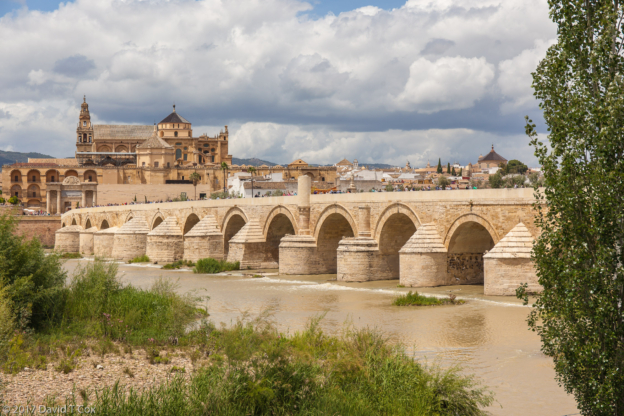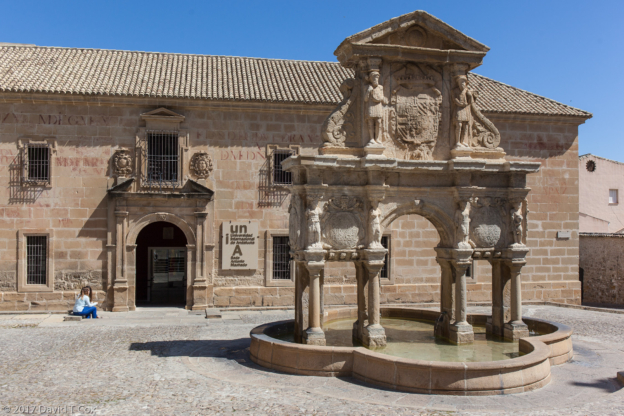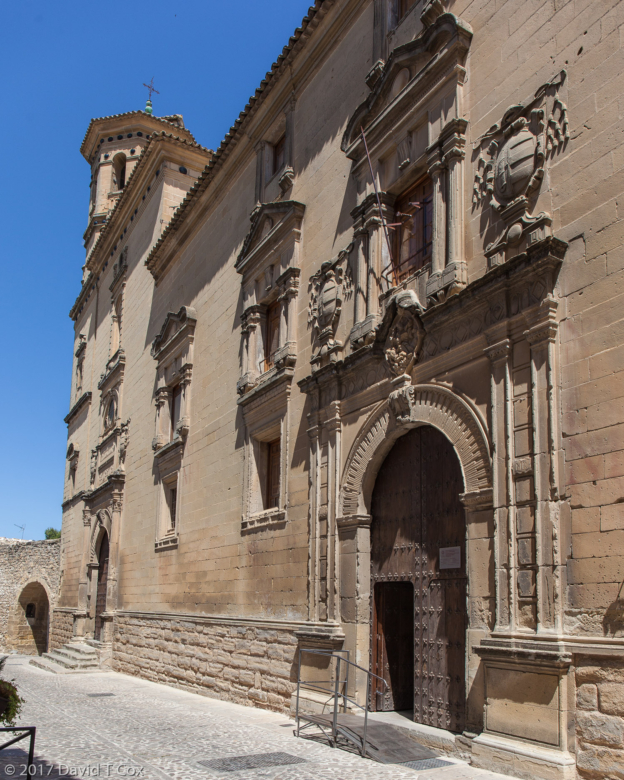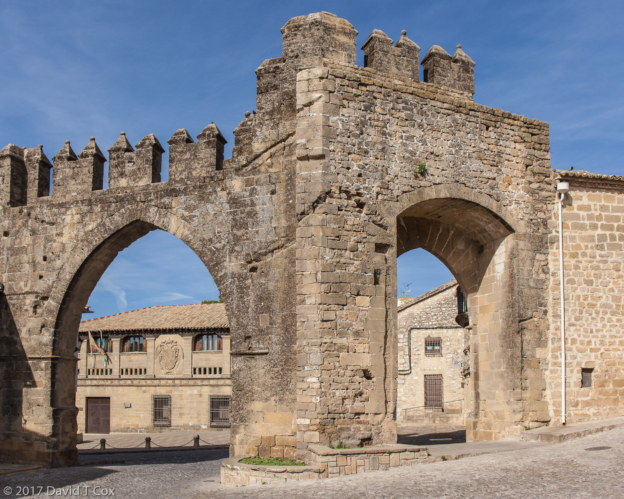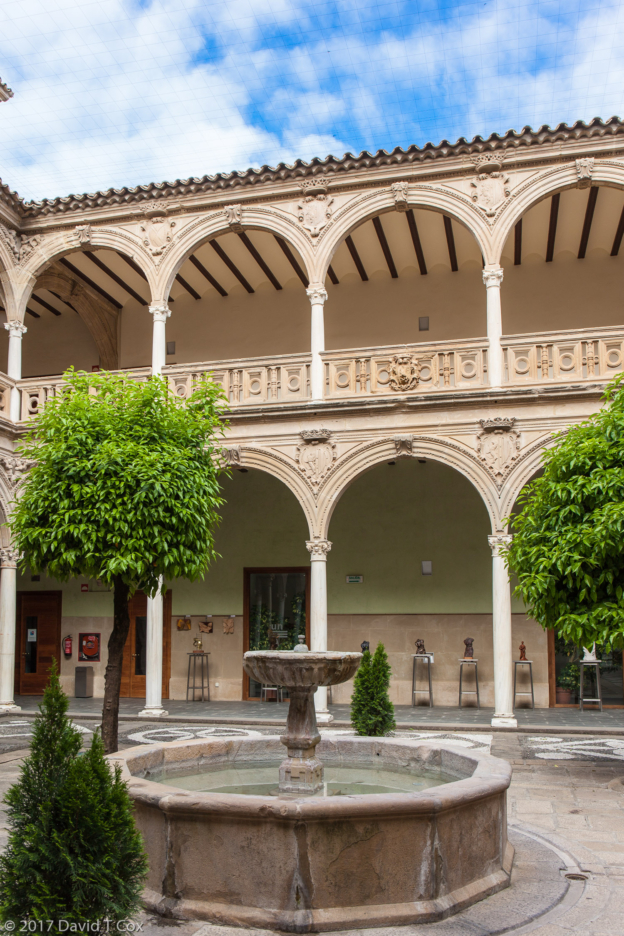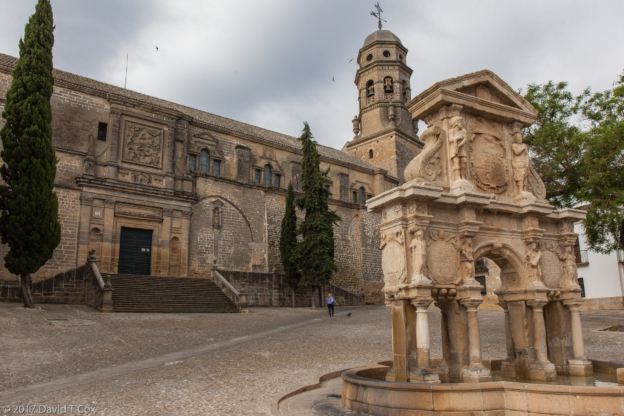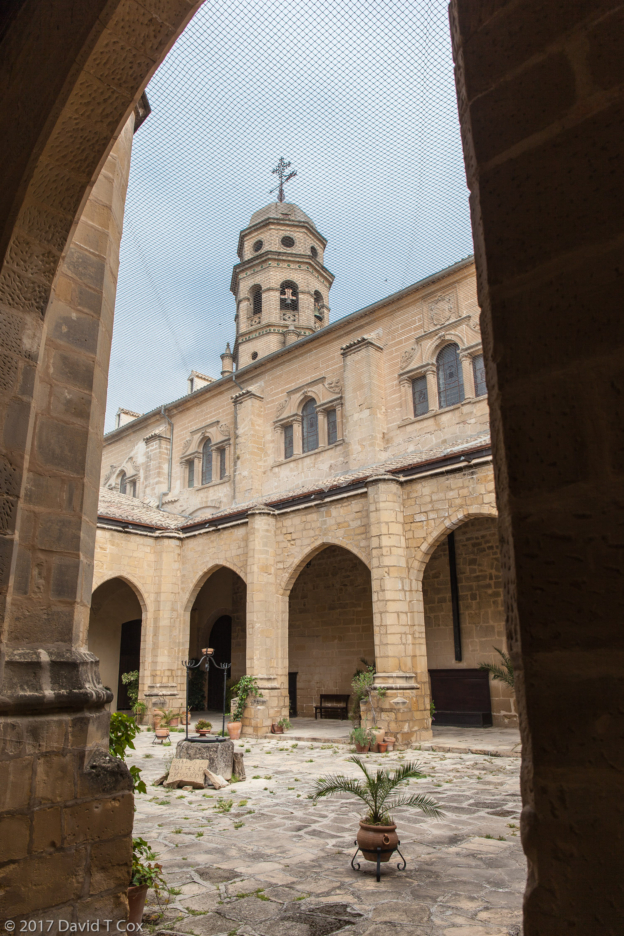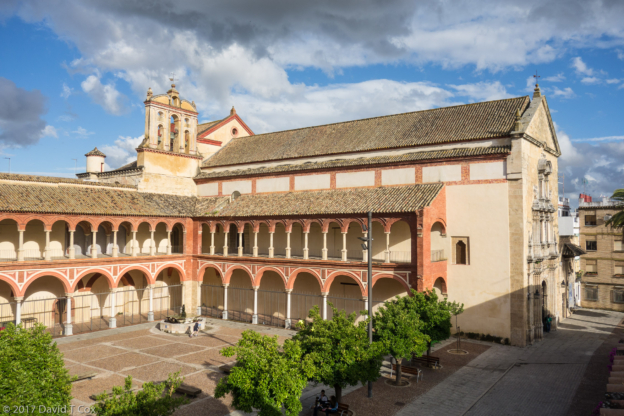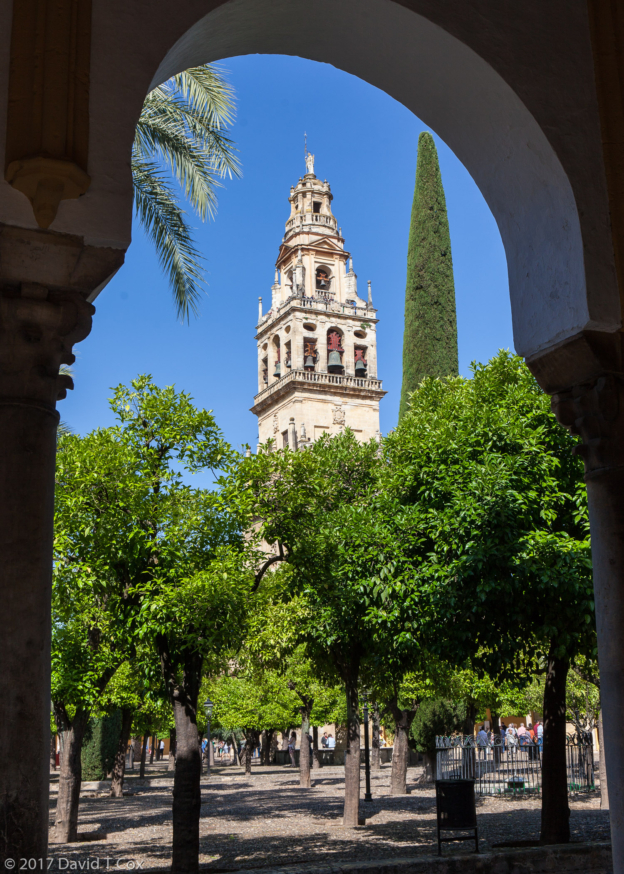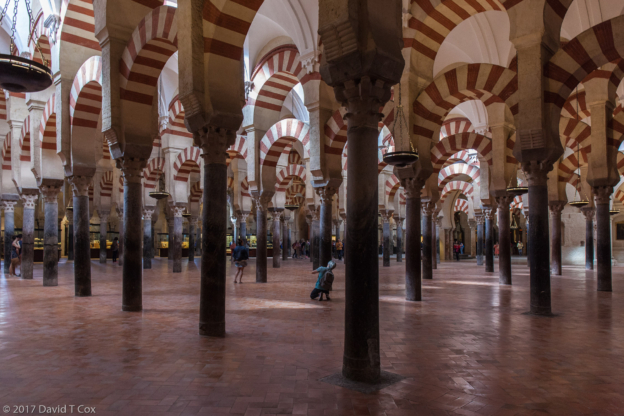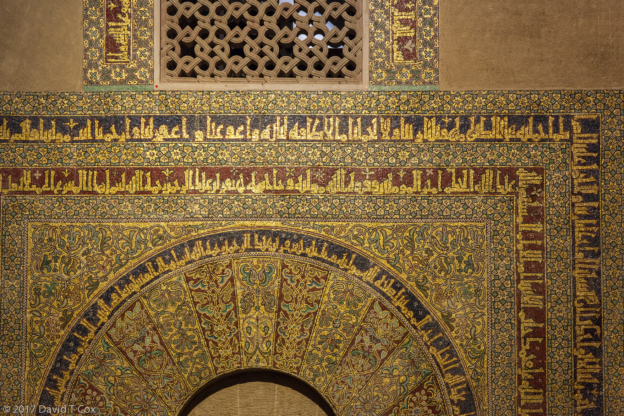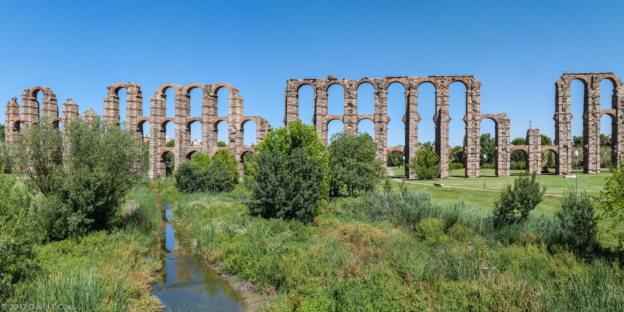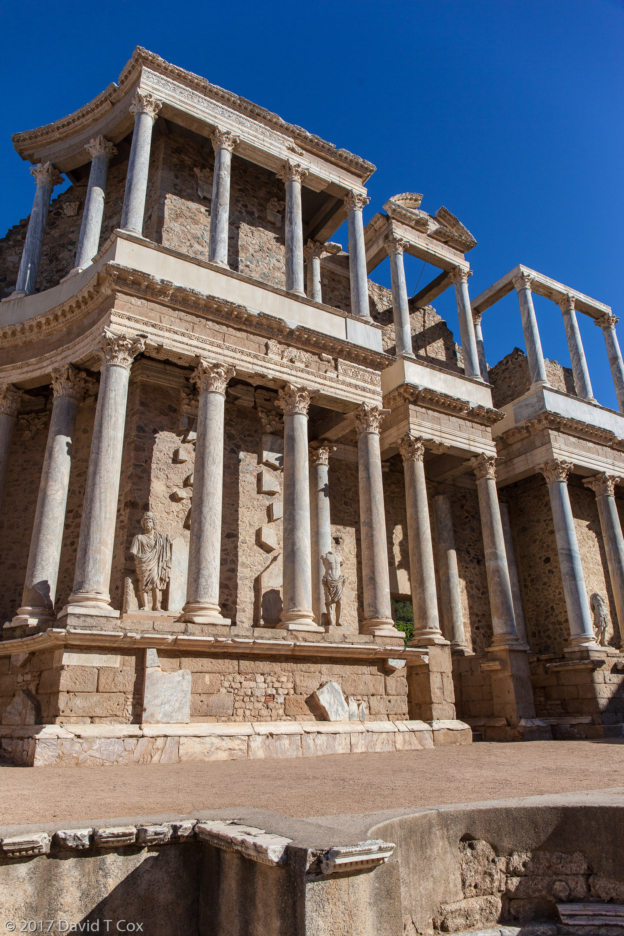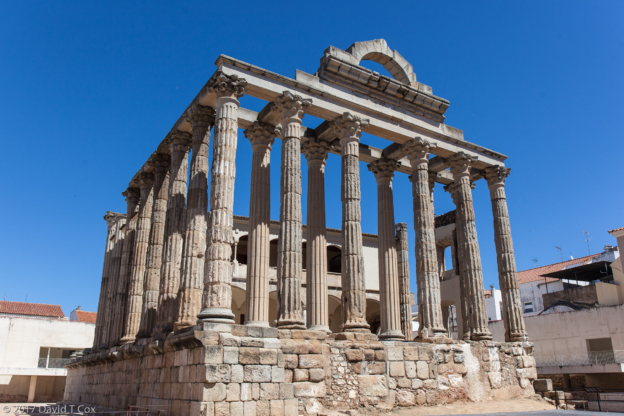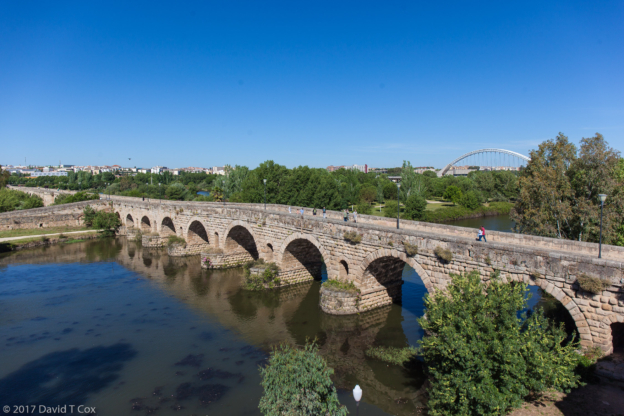All Photos Are Below the Travelogue Text
Click on Any Photo To Open Slide Show
To print the travelogue, right click anywhere on the page. Choose "Print" from your browser dialog box. You can choose Save to PDF in the browser print window.
Share your thoughts.
Email Dave - coxdavid55@hotmail.com
I last reported from Ubeda. From there I traveled 9 kilometers, just over the hill, to its smaller sister town, Baeza; together the two towns share UNESCO World Heritage Site status for their remarkable Italian Renaissance style edifices which dominate the ancient town cores. As I previously noted, the town nobles through the first half of the 16th century served at the highest levels in the Royal Court of Charles V, who both was Emperor of Spain and Holy Roman Emperor. The nobles brought wealth and an appreciation of Italian Renaissance architecture, along with architects, to Ubeda and Baeza where a number of impressive buildings and palaces were constructed, along with many additions made to the cathedrals.
In Baeza I stayed in a lovely 3 room apartment directly behind the cathedral, where I enjoyed serving up my own version of jamon Iberico (Iberian cured ham) and cheese sandwiches on fresh baked whole wheat baguettes. I spent early evenings at the Café Mercantile on the corner of the Plaza Constitucion, enjoying very cheap vino tinto with free tapas, including more caracoles (escargots).
From Baeza I traveled by bus to Cordoba, which in the past I have visited a number of times. Cordoba in the 9th to 10th century became the western Caliphate of Islam, rivaling Mecca. During this period it attracted scholars and educators from the three great monotheistic religions, Islamic, Jewish and Christian, and was considered the crossroad of the three cultures, with the largest population in Western Europe of around 250,000. The mosque, mezquita in Spanish, was built on the site of the earlier Visigoth church, and was continually enlarged to become the third largest mosque in the world. Its Mihrab arches are covered with mosaics of tiny gold and semi-precious stone cubes, a gift from the Emperor in Constantine. After the catholic reconquest of Cordoba, the mosque was re-converted into a church, and ultimately an entire cathedral rises upward through the original roof in the middle of the huge mosque.
Cordoba is where I began to run into huge groups of tourists. As the years pass, more and more of the greatest sites in the world are simply becoming overwhelmed with tourists. It has become more acute in the last several years as huge numbers of Chinese now have joined the rest of the world in venturing beyond Asia. There simply are too many people who wish to see the world’s greatest cultural and archaeological sites, and those sites are not enlarging nor reproducing. I see only one solution. Those sites with the most pressure will need to limit access, and provide some kind of lottery reservation system – this already has been happening at the Alhambra in Granada, Spain, and to an extent now in Machu Picchu, Peru and the Taj Mahal in India. I hit Cordoba at its busiest, but the day I tried to visit the Alcazar (Castle) the line snaked out to the street and down the block. It was similar at the Mezquita, and later the same in Sevilla at the great Cathedral and Alcazar there. I finally waited in line in Cordoba and did revisit the Mezquita, but in Sevilla I gave up on the major sites, having on previous trips photographed them at least twice.
In Baeza, Cordoba, Sevilla and now Merida, I have been booking newly built small apartments, which are showing up regularly on the website Booking.com. These all have been available by the day, and are far larger and superior to the hotel rooms I am accustomed to, including coming with small fully furnished kitchens, washing machines and more – and the prices have been equal to or less than the hotel rooms (averaging around $75 per day). Most don’t have any type of reception, and so one needs to call or email in advance to arrange to pick up the keys and pay the tab. I have spoken with some of the owners, and they seem to agree this is a new trend coming after the real estate bubble burst in Spain some years ago. It is certainly a pleasant experience for me.
My mode of travel has been mixed; I traveled to Ubeda, Baeza and Cordoba by bus. From Cordoba to Sevilla I traveled by train, generally a little more expensive, but often far more comfortable and sometimes faster. From Sevilla to Merida I traveled again by bus as there is rare train service, but today go north to Caceres by train.
Merida, as I have reported in prior trips, was the first and major Roman city established in the Iberian Peninsula, officially designated the capital of Lusitania in 25BC by Augustus Emeritus (Emeritus morphing into today’s name of Merida). It contains the best Roman structures, ruins and museum pieces in this part of Europe, and rivals most other sites. Especially a masterpiece is the Roman Theater, one of the best preserved in the world, built in 25BC, beside which sits the Amphitheater built a few years later for the gladiator sports. Also always impressive are the remaining sections of the 8-storey tall Roman aqueduct arches, the tops of which serve as the nesting sites for White Storks. Merida contains the only hippodrome (chariot racing arena) in Spain, and the longest Roman Bridge which crosses the Rio Guadiana. Merida also contains remains of the great Visigoth culture which supplanted the Romans around the 4th century AD and continued until arrival of the Moors in the 8th century.
I previously have written extensively on Cordoba, Sevilla and Merida in my travelogues of 2003, 2006 and 2010, and so pass over much detail on the sights now. I will, though, take time to complain about the continuing disappearance of many old classic tabernas and restaurants that I had critiqued in prior trips – one here in Merida, a lunch-time favorite, was an almost snobby old tavern with an upstairs restaurant, with maître de, wood paneling and tables covered with white linen, all sitting over the arches on the Plaza de Espania, across from the Alcazaba (fortress), now gone. In its place, occupying both floors, sits the white and chrome newly decked out two-story Burger King – it makes me want to cry.
Today I travel the short distance by train north to Caceres, the city of the Conquistadores, where most of the palaces still stand inside the walled city.
Dave
- Fuente de Santa Maria, 16th C Renaissance, and Seminario San Felipe Neri, 17th C, Baeza, Spain
- Universidad Antigua, 16th C Renaissance, Baeza, Spain
- Puerta de Jaen (R) and Arco de Villalar, 16thC, on Plaza del Populo, Baeza, Spain
- Palacio de Jabalquinto, 15th C, 16th C Renaissance courtyard, Baeza, Spain
- Catedral and Fuente Santa Maria, Baeza, Spain
- Catedral, Baeza, Spain
- Iglesia San Francisco from rooftop patio Hostal La Fuente, Cordoba, Spain
- Roman Bridge over Rio Guaadalquivir and Mezquita, Cordoba, Spain
- Mezquita, Cordoba, Spain
- Mezquita arches, Cordoba, Spain
- gold cube mosaics of Mehrab, Mezquita, Cordoba, Spain
- Mezquita arches, Cordoba, Spain
- Catedral, Sevilla, Spain
- Acueducto de los Milagros panorama 1, Roman, Merida, Spain
- Acueducto de los Milagros, Roman, Merida, Spain
- Roman Theater, 1st C, BC, Merida, Spain
- Dave at Roman Theater, 1st C, BC, Merida, Spain
- Temple of Diana, Roman, Merida, Spain
- Roman Bridge, 1st C. BC, Merida, Spain
To print the travelogue, right click anywhere on the page. Choose "Print" from your browser dialog box. You can choose Save to PDF in the browser print window.
Share your thoughts.
Email Dave - coxdavid55@hotmail.com
